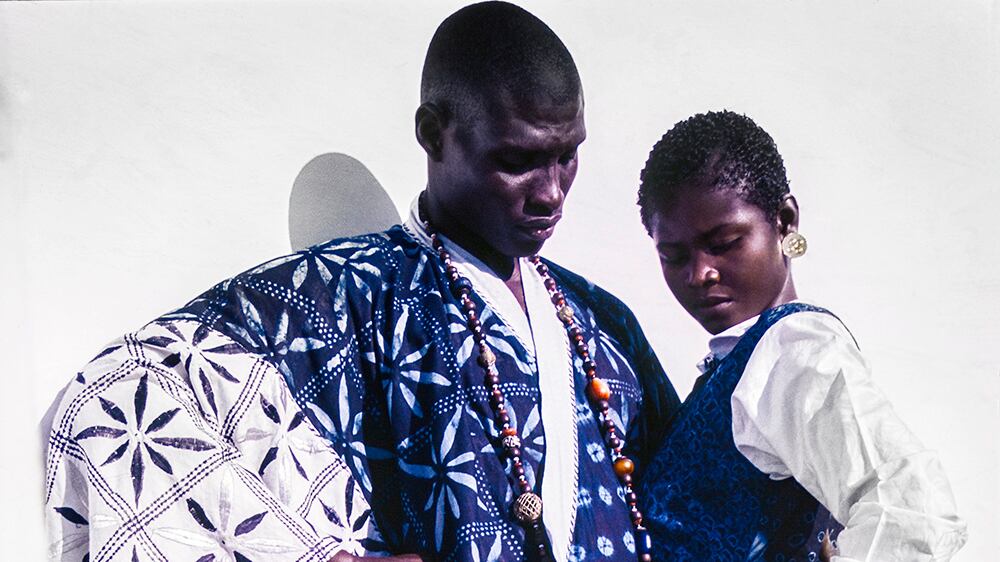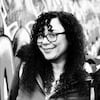Of all the applied arts, fashion is arguably the most impactful.
Fashion blurs the line between the aesthetics of fine art and the functionality of contemporary craft, creating a tangible historical record in which we can hug the curves of cultural progression. Africa Fashion, now showing at the Portland Art Museum after much-heralded runs at London’s Victoria and Albert Museum and the Brooklyn Museum in New York, is a glorious exploration of that premise through the lens of the African diaspora.
This exhibition feels particularly vital at this moment. While Western media paints a distortive picture of Black and queer Black life, each section of this exhibit disregards preconceived notions, showcasing creations infused with unapologetic visionary joy.
The exhibit welcomes visitors with video loops of models posing dynamically in avant-garde pieces, sparkling and fluttering with colors and textures that defy easy categorization. Up next? Vibrant fuchsia (or magenta, depending on how the lights hit it) raffia-fringed couture by designer Imane Ayissi. Both pieces make a clear declaration on style and culture, projecting precisely what type of energy visitors can anticipate coursing through the exhibit’s corridors.
From these first dynamic visual elements, Africa Fashion is a feast for the eyes, focusing on “abundance rather than lack,” as the exhibition’s curator Christine Checinska describes. The exhibit’s intimate first gallery explores “The Year of Africa” (1960), when 17 African Nations bucked colonial occupation and, as a result, amplified the African fashion industry internationally.
This gallery primes visitors for the intrinsic relationship between fashion and resistance as it relates to post-colonial Africa. From complex wax-dyed linens to extravagant political costumes glittering with finely woven gold threads, these works are a window into a wildly influential period of African art.
Couture performance costumes, crisp atelier-to-runway selections, and a peppering of contemporary accessories that embrace traditional silhouettes all lead to a grandiose central showing reminiscent of a fashion week extravaganza, with dozens of Bantu-knotted or close-cropped mannequins displaying a spectrum of works that embrace ancestry and modernity in equal measure, which in itself feels extraordinary. Frenetic pattern clashing, unexpected alternative materials, and embroideries so fine they demand to be stared down all condense to deliver a glorious Afrocentric fashion renaissance unbothered by a dominant white fashion media (shoutout to Ghanaian-born British Vogue editor-in-chief Edward Enninful).
Highlights in this show abound: the trans-pride street/clubwear of Johannesburg designer Rich Mnisi, an aggressively patterned black-and-white jumpsuit from the Beyoncé-endorsed Senegalese brand Tongoro (designed by Sarah Diouf), the bright-gold African-mask cast buttons adorning a futuristic suit based on the all-female military costumes of what is now Ghana and Benin by Loza Maléombho.
Ghanaian engagement-wear fashioned from traditional kente cloth is juxtaposed against gowns crafted from sleek vinyls and geometrically placed black-and-silver zippers. The theme, if one can be pinpointed, is the palpable energy of authentic expression through fashion, and in that, an avenue for necessary representation.
At the show’s preview, Checinska mused about Afrofuturism and Afro-utopia and how Africa Fashion not only amplifies those notions but also speaks in concert with PAM’s concurrent exhibit, Black Artists of Oregon (and how the language of Black joy and Black futurism are integral to discussions about resistance and liberation).
These exhibits share the same DNA, their force emanating from a rejection of the monolithically white Western art world in favor of artistic legacies that break new ground, tell new stories, and engage the intergenerational concern of art patrons of all backgrounds.
In 2018, I learned to sew my own clothes, primarily inspired by the Technicolor Nigerian and Ghanaian street-style blogs I’d long obsessed over. Interacting with Africa Fashion filled me with the same inspiration to express with fashion what cannot be expressed with words, and to honor heritage by being, among other things, an inarguably fiercely dressed and unapologetically half-Black fashion enthusiast.
Your experience may vary, but that should not deter Oregonians, especially Black Oregonians, from engaging with both Africa Fashion and Black Artists of Oregon while they’re on display together. It’s a conversation worth listening in on, even for those who identify as fashion apathetic (which is a pity, because even bad style is better than no style).
SEE IT: Africa Fashion at Portland Art Museum, 1219 SW Park Ave., 503-226-2811, portlandartmuseum.org. On view through Feb. 18, 2024. 10 am-5 pm Wednesday-Sunday.

